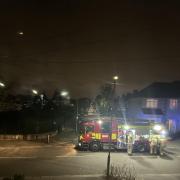
The closure of Hammersmith Bridge in West London has created issues surrounding transport and commute lengths, and has increased traffic throughout London. It has wreaked havoc among local communities, made it difficult for children to get to school, and elders to get to their hospital appointments, as well as creating numerous other issues surrounding travel. Little has been done to attempt to fix the bridge, and it was reported by the BBC that the bridge “will not fully re-open to traffic for about 6 ½ years.”
The 133-year-old bridge first closed in April 2019, after micro-fractures in the cast iron frame of the bridge was found. These micro-fractures could shatter at any time and this would mean the bridge would fall into the Thames. This posed an obvious risk to the local community, as well as the river traffic, the 16,000 pedestrians who used the bridge daily, and, of course, the constant, heavy road traffic. No-one is allowed to use the bridge since it’s 2019 closure; no cyclists, no cars and no pedestrians, and river traffic is stopped from passing under the bridge – creating issues surrounding trade.
It was estimated that the cost of repairing the bridge for pedestrian use would cost around £46 million, while a full restoration would cost £140 million. The Government has spent £10 million on studying the feasibility of repairing the bridge and overseeing early repairs, and will spend another $15 million over 2020/21. However, this by no means matches the budget that is necessary to repair the bridge, and Hammersmith and Fulham Council do not have £115 million to spend as they wish. Recent reports have found that the cost of a full repair may only cost £100 million, but this is still above budget for the local council.
This is one of the most prevalent issues in West London as over 1000 school children are affected daily. Iris Coulter says that ‘it is up to the government to fund the bridge as it is unfair to expect a London council to do so. The closure of Hammersmith Bridge has wreaked havoc on communities on both sides of the river for long enough and needs to be solved promptly.’ Klara Von Stauffenberg added that ‘Boris spent £20 million on the Garden Bridge, but is reluctant to solve an arguably more pressing issue that is the closure of Hammersmith Bridge. This is completely despicable and unfair to the communities that heavily rely on the bridge.’ Many school children living in Richmond, Fulham, Hammersmith, Barnes and more places on both sides of the river have had their journey times tripled because of the closure of the bridge.
The Government and local council need to work efficiently together to raise the money to fund the bridge repair, and in the meantime it would be helpful if a temporary ferry service was established. People’s lives cannot be disrupted by this for six and a half years, and so the government need to take some action to lessen the impact on the affected communities; whether that be fixing the bridge or implementing alternative public transport services.



























